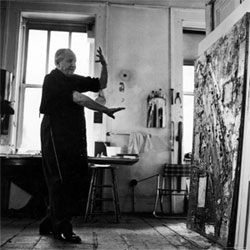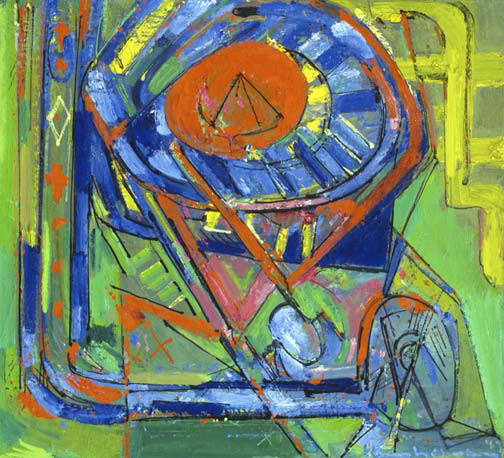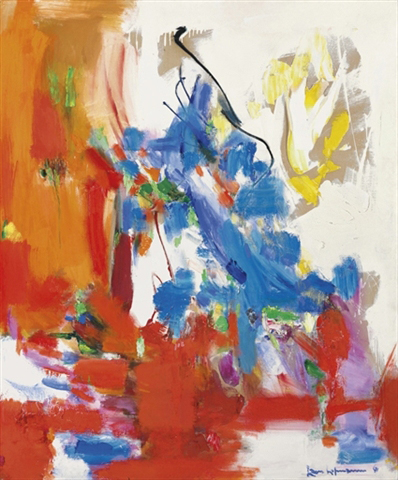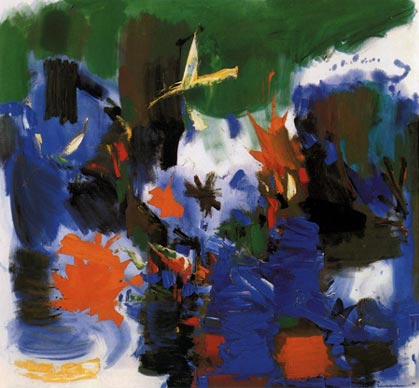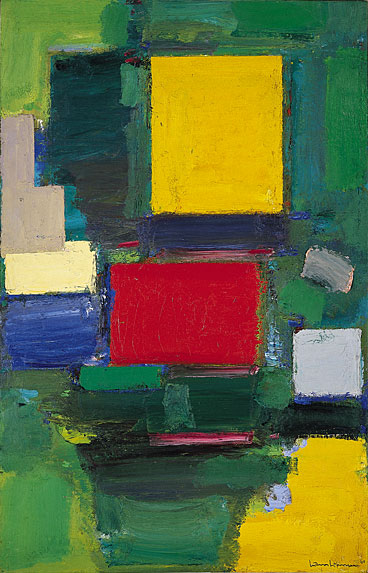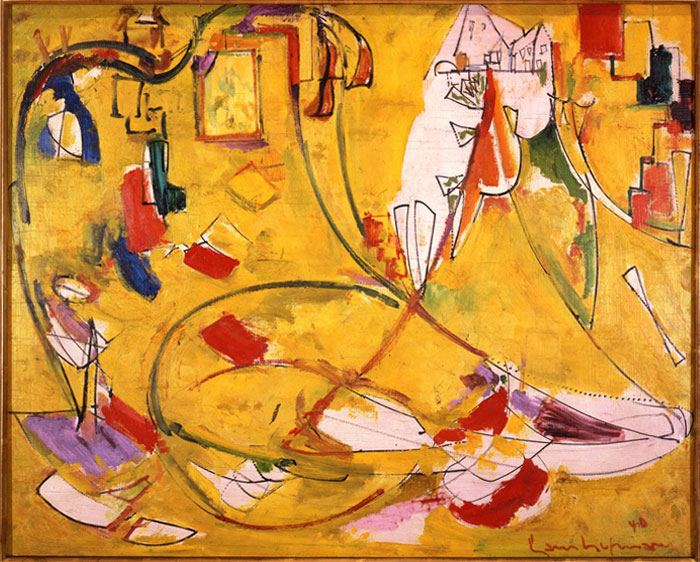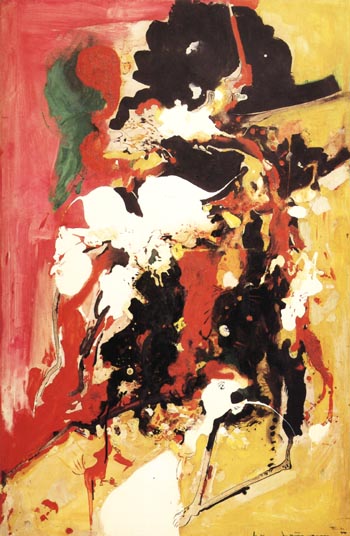<Back to Index>
- Inventor Major General George Owen Squier, 1865
- Painter Hans Hofmann, 1880
- King of Naples Charles I, 1226
PAGE SPONSOR
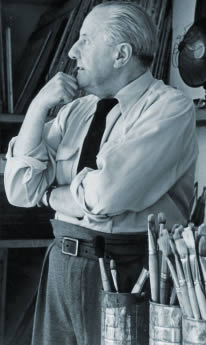
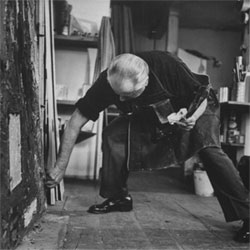
Hans Hofmann (March 21, 1880 – February 17, 1966) was a German born American abstract expressionist painter.
Hofmann was born in Weißenburg, Bavaria, on March 21, 1880 the son of Theodor and Franziska Hofmann. At age six he moved to Munich. It was here that his father took up a job with the government. Starting at a young age, he gravitated towards science and mathematics. At age sixteen, he started work with the Bavarian government as assistant to the director of Public Works. Through this, Hofmann was further able to develop his knowledge of mathematics. He went on to develop and patent devices such as the electromagnetic comptometer, a radar device for ships at sea, a sensitized light bulb, and a portable freezer unit for military use. Even with such great abilities in science and mathematics, Hofmann started to take great interest in creative studies, starting educational art training after the death of his father. In 1932 he immigrated to the United States, where he resided until the end of his life.
Hofmann's work is distinguished by a rigorous concern with pictorial structure, spatial illusion, and color relationships.
His completely abstract works date from the 1940s. Hofmann believed that abstract art was a way to get at what was really important. He famously stated that "the ability to simplify means to eliminate the unnecessary so that the necessary may speak".
Hofmann was renowned not only as an artist but as a teacher of art, both in his native Germany and later in the U.S. In Munich he founded an art school, where Louise Nevelson, Wolfgang Paalen, Worth Rider and Alfred Jensen, were among his students. He closed this school in 1932, the year he immigrated to the U.S.
In America, he initially taught a summer session at the University of California, Berkeley in 1930, after which he returned to Munich. In 1931 he taught another summer session at the University of California, Berkeley and a semester at the Chouinard Art Institute in Los Angeles before again returning to Germany. After Hofmann relocated to New York City he began teaching in 1933 at the Art Students League of New York. Leaving the League in the mid 1930s Hofmann opened his own schools in New York and later in Provincetown, Massachusetts. Many famous or notable artists, especially some who could generally be classified as abstract expressionists, studied with Hofmann in New York and Provincetown. These distinguished alumni included: Lee Krasner, Israel Levitan, Helen Frankenthaler, Gerome Kamrowski, Michael Loew, Joseph Plaskett, Fritz Bultman, William Ronald, Joan Mitchell, Michael Goldberg, Ray Eames, Larry Rivers, Jane Frank, Mary Frank, Nell Blaine, Robert de Niro, Sr., Jane Freilicher, Allan Kaprow, Red Grooms, Wolf Kahn, Marisol Escobar, Paul Resika, Sy Kattelson, Nicholas Krushenick, Burgoyne Diller, Mercedes Matter, James Gahagan, Erle Loran, Paul Georges, Louisa Matthíasdóttir, Judith Godwin, Lynne Mapp Drexler, Roland Petersen and Donald Jarvis.
In 1958, Hofmann closed his schools in order to devote himself exclusively to his own creative work. Hofmann is a painter and theorist of particular appeal to other artists. American painter Walter Darby Bannard and British artist John Hoyland both have been involved in curating retrospectives of Hofmann's work.
Also
prominent as a writer on modern art, Hofmann authored an influential
book (sometimes referred to and anthologized as an "essay"), Search for the Real,
in which he discussed his push/pull spatial theories, his reverence for
nature as a source for art, his conviction that art has spiritual
value, and his philosophy of art in general. Hofmann is especially
noteworthy as a theorist of the medium who argued that "each medium of
expression has its own order of being," "color is a plastic means of
creating intervals," and "any line placed on the canvas is already the
fifth." Hans Hofmann's recognition has increased in the early sixties. In 1963, The Museum of Modern Art gave a full scale retrospective, organized by William Seitz. The
retrospective exhibition circulated various venues through 1965. There also followed a circulating exhibition also organized by The Museum of Modern Art, New York, NY: 58
works were represented by 51 artists. 49 paintings, 6 sculptures, 1
“environment.” Organized by William Seitz for the Museum of Modern Art
6–27 May, it was also widely circulated from 1963 to 1965.
Hans
Hofmann's works are in the permanent collections of many major museums
in the United States and throughout the world, including the
UC Berkeley Art Museum, New York's Metropolitan Museum of Art, the Solomon R. Guggenheim Museum, the Whitney Museum, the Museum of Modern Art (New York), the San Francisco Museum of Modern Art, Boston's Museum of Fine Arts, the Provincetown Art Association and Museum, the Art Institute of Chicago, the Seattle Art Museum, the Dayton Art Institute, the Indianapolis Museum of Art, the Baltimore Museum of Art, the Cleveland Museum of Art, the Philadelphia Museum of Art, the Honolulu Academy of Arts, the Städtische Galerie im Lenbachhaus (Munich), the Museu d'Art Contemporani, (Barcelona), and the Tate Gallery (London). In addition to these collections, he also designed a colorful mural located outside the entrance of the High School of Graphic Communication Arts located in the Hell's Kitchen neighborhood of the borough of Manhattan in New York City. After Renate's death in 1992, the
New York Daily News published
an article titled, "From Caviar to Cat Food," which detailed the "sad
and tortuous story" of Hofmann's widow. The article contended that
Renate's court appointed guardians "milk[ed] the Estate for more than a
decade" and allowed the mentally unstable Renate to live "with her cats
and liquor in a garbage - strewn oceanfront home." Under
threat of prosecution, the original executor of the Hofmann Estate,
Robert Warshaw, was successful in having the neglectful guardians pay
$8.7 million dollars to the Estate for "extraordinary conscious pain
and suffering." Under
the will of Renate Hofmann, The Renate, Hans and Maria Hofmann Trust
was formally created with Robert Warshaw at its head. The mission of
the Trust is "to promote the study and understanding of Hans Hofmann's
extraordinary life and works" and to accomplish these goals "through
exhibitions, publications and educational activities and programs
focusing on Hans Hofmann" as well as forthcoming catalogue raisonné of Hofmann's paintings. The U.S. copyright representative for the Renate, Hans and Maria Hofmann Trust is the Artists Rights Society.
